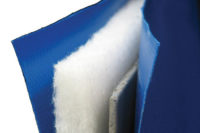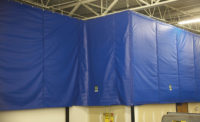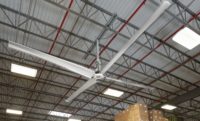Loud noises such as a backing semi-trailer or a fire alarm alert workers of impending danger. However, loud noises themselves can be dangerous, causing a host of immediate and long-term problems for employees and operations.
In fact, sound is even used as a form of warfare. CNN reported the story of sonic attacks1 in the spring of 2018 that led people to experience symptoms of a traumatic brain injury, similar to a concussion. The sounds that these people heard were described as “buzzing,” “grinding metal,” “piercing squeals,” and “humming.” Does that sound like an industrial work setting?
30 million workers at risk
Most industrial work places with loud operations have safety measures in place to minimize the threat of loud noises, but the danger does exist. OSHA estimates that more than 30 million workers in industrial settings are exposed to hazardous levels of noise each year in the U.S.
In addition to long-term damage, OSHA warns that excessive noise can cause physical and psychological stress, reduce productivity, interfere with communication and concentration, and contribute to workplace accidents and injuries.
Common control methods
Perhaps the most well-known noise control method is personal hearing protection. Because OSHA requires employers to limit sound levels to 90 dB or less on an 8-hour time-weighted basis, many facilities offer earplugs or ear muffs. However, this equipment needs to be properly fitted and worn to be effective. Additionally, regular hearing testing of affected employees is mandated by OSHA. While earplugs and ear muffs do the job, audio communication between workers is compromised when they’re worn.
There are alternatives to personal protection in loud industrial environments, like redesigning or replacing loud equipment with new, quieter models. This option is not always possible due to the cost or availability of quieter equipment. Some noisy machines can be modified with isolation pads or vibration dampeners to reduce or vanquish excessive sound. Encasing machines in sound-absorbing enclosures or materials is another option.
Yet another possibility is to implement noise reduction barriers. Typically, these barriers are rigid, insulated walls or partitions that are strategically placed to block the path of transmitted sound waves, and absorb and scatter them, reducing the perceived sound that reaches the affected employees. These benefits can be realized after the downtime of construction.
Controlling facility noise flexibly
Another option similar to rigid, permanent walls is sound attenuating curtain walls. Curtain walls can be configured to fit virtually any interior space and require significantly less time to set up than it takes to build permanent walls. Individual fabric panels of virtually any length are interconnected with Velcro to form each continuous wall.
Curtain walls also can be easily re-configured to adapt to changing production demands and floor layouts. It’s easy to add to or enlarge an initial curtain wall installation. If source sound levels increase for any reason, it is very simple to add a second layer of flexible sound curtain to an existing one, or even to augment an existing rigid wall (a fairly common application).
Acoustic curtain components
Acoustic curtain walls normally consist of two layers of a woven, coated fabric surrounding one or more layers of various insulating materials. These materials might include fiber batting (polymer or glass), open cell foam, or densified “loaded” vinyl or other flexible polymer sheet material.
Each component plays an important role in reducing sound levels encroaching on the curtain surface. The mass loaded vinyl sheet in a sound curtain is more effective in reducing lower frequency noise than the other components (low frequency sound is best absorbed or deflected with high density solid materials). Fiber batting is effective in reducing sound at mid to higher range frequencies.
The interior core of a typical sound curtain will consist of a layer of sound-dampening, loaded vinyl and a layer of antimicrobial polyester batting as an additional sound buffer that also serves to fill out and maintain the body of the panel. This core is captured between two outer layers of 18-oz flame retardant vinyl, available in a number of colors for aesthetics.
Typically, the loaded vinyl side of the core is positioned facing the offending noise source, between the source and the desired ambient sound area. In a completed installation, the wall acts to trap the sound in a specific area and limit the migration of the sound to the ambient employee areas.
Reference:
Disclaimer: The information herein is provided as a general reference regarding the use of the applicable product(s) in specific applications. This information is provided without warranty. It is your responsibility to ensure that you are using all mentioned products properly in your specific application and in accordance with all laws and regulations.



